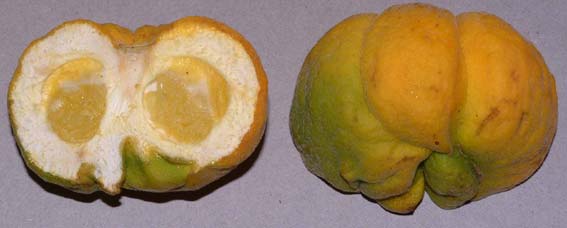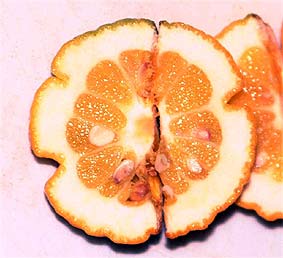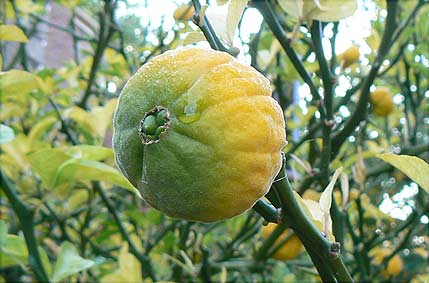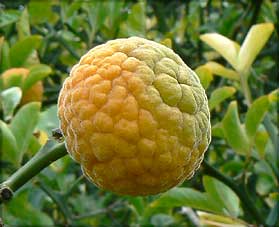Here in England there's an excellent nursery called Hilliers that produces a book listing all the trees and shrubs that are hardy in the British Isles.
Up until the 1970's they used this book as a catalogue and claimed they would propagate any plant listed. Included was the species 'XCitroncirus Webberi', better known to citrus growers as 'Citrange'.
I think it was in 1976 that I ordered a XCitroncirus Webberi from Hilliers. Back came the reply - very sorry, we are no longer stocking or propagating plants with little demand from customers.
So, I ordered and planted a couple of Poncirus trifoliata instead, both of which thrived and are now mature and fruiting.
But ever since then I have been keeping an eye open for a Citrange growing in England. Though over the past 30 years, I must have visited hundreds of gardens, I've never found one.
Last week, I received an e-mail, asking me to identify a citrus fruit growing outside somewhere in England. Bound to be a Poncirus, I replied.
But, a follow-up e-mail claimed the fruits were 2"-3" diameter, and much like the picture of a Willets Citrange shown on my website.

Two photos of the fruits were included with the e-mail:


It really didn't look like a Poncirus fruit. Much more defined segments, and a pithy central core.
Where is it?, I asked, starting to get interested. Well, it turned out to be in the garden of a closed-for-renovation museum in the city of Leicester, about two hours drive from me. So I phoned the museum, negotiated permission to look round the garden, and set off.
I found the 'citrus' in the museum garden.
It was a Poncirus trifoliata, no doubt about it.
Yes, the fruits were on the large side. And one or two had a kind of navel, which I haven't seen on Poncirus fruits before.

It was one of these slightly unusual fruits that had been photographed and had the pithy core. But otherwise, it was a standard Poncirus with deciduous leaves starting to drop.
A considerable disappointment, and a somewhat wasted 4 hour drive.
And the search for an English citrange goes on!
Mike




















